You can read this exclusive content thanks to the FALATH & PARTNERS law firm, which assists American people with Slovak roots in obtaining Slovak citizenship and reconnecting them with the land of their ancestors.
In the historic town of Skalica, western Slovakia, we pull up in front of a striking Art Nouveau building, home to the local Tourist Information Office and a vibrant cultural hub. Inside, Renáta Medňanská, the dynamic head of the office, greets us with infectious enthusiasm, eager to share not just plans for restoring the town’s historical treasures but also the evolving trends shaping tourism in this once free royal town.
“Tourists typically visit Skalica for two to three days, but we aim to encourage them to return regularly for unique experiences,” explains Medňanská.
How do they plan to achieve this?
According to her, modern tourists are no longer satisfied with simply strolling around historical sites and churches while listening to stories of long-forgotten founders. “People seek experiences, and we can provide them. For instance, they can sing in the Jesuit Church, which boasts excellent acoustics,” she elaborates.
For those uninterested in churches or historic houses, Skalica offers a range of technical monuments to explore, such as Pilárik’s Mill, which remains operational, or the town icehouse. Additionally, visitors can access locations not typically open to the public, including the historic building of the Špicer Brewery.
Cemeteries in Skalica district
For many foreigners tracing their Slovak heritage, finding the burial sites of their ancestors is a deeply personal journey. To aid in this quest, we have provided maps of the districts we visited, with every cemetery carefully marked. Here you can find cemeteries in Skalica district.
The renovation of the town icehouse is one of several projects funded by a cross-border cooperation programme (Interreg) with neighbouring Czechia. This project will feature models of ice, barrels, railings, and food displays, along with a video projection. Visitors will learn about the icehouse’s historical role as the town’s refrigerator.
“In addition, we are nearing completion of the renovation of the historic pharmacy, which will include antique furniture and equipment. It is set to open in May,” says Medňanská.
Trdelník from Skalica
Although the city’s tourist office offers guided tours of the monuments, many visitors prefer to use an audio guide available via a mobile application. "Everything about the city is narrated in three languages, and we are also planning a guide in language suitable for children to ensure that kids are engaged without being overwhelmed by facts and figures," explains Medňanská, discussing current tourism trends.
An interesting initiative is the installation of “windows into the past” throughout the town. These windows depict monuments that no longer exist because they were demolished or rebuilt.
Visitors arriving in Skalica at the end of May can sign up for a themed tour called “In the Footsteps of Skalica’s Specialities”, which includes a demonstration of how to bake Skalický trdelník, a traditional sweet pastry. The town has its own trdelník bakery capable of producing 80 pieces per day, but this often falls short due to high tourist demand. Private companies therefore help meet this need.
It is unfortunate that to buy the famous trdelník, one has to explore the side streets rather than find a shop directly on the main square. However, the saleswoman is very friendly and offers us a larger version of the trdelník instead of the smaller one we had originally wanted.
A canal with a disputed beginning
Skalica plans to invest in expanding the port on the Baťa Canal with the assistance of EU funds. The expansion will include new piers, a restaurant, a playground, and a larger car park.
The Baťa Canal is a unique waterway, named after its initiator, the renowned entrepreneur Tomáš Baťa. It runs from Skalica, which is home to Slovakia’s only port, to Otrokovice, spanning more than 50 kilometres.
Czechs state that the Baťa Canal ends in Skalica, while Slovaks believe it begins there. Construction work is already underway on the Czech side of the port, while the Slovak side remains quiet as they await EU funding. The Czechs are expanding the navigation channel to accommodate more tourist boats.
Access from Skalica to the port on the Baťa Canal is via a narrow asphalt road, shared by cars, cyclists, and pedestrians - a less than ideal situation. We experienced this firsthand, having to navigate not only speed bumps but also potholes in the asphalt while driving.
“The port is located nearly four kilometres from the town centre, which discourages many visitors from walking into town,” admits Medňanská.
Conversely, the number of cyclists in the town is on the rise. In response, the town plans to construct a cycle path from Mondokov kříž to the neighbouring Sudoměřice in the Czech Republic.
“Czechs tend to be more enthusiastic visitors and cyclists than Slovaks, so we aim to attract them to our town,” adds the head of tourism in Skalica.
A legacy rooted in 1939
When Peter Kopeček, the current owner of the winery, reflects on the history of his family’s vineyard, he often thinks back to 1939, when his grandfather first planted vines in Novosady and built a wine cellar. At that time, he could not have predicted that his descendants would carry on the tradition of grape growing and winemaking.
The journey to the current vineyards has not been easy. After Kopeček’s grandfather, František, cultivated the vineyards, his son, also named František, continued the work. However, in the 1970s, the communist regime nationalised the vineyards, uprooting them and converting the land into fields.
Following the fall of communism in 1989, many winemakers in Skalica reclaimed their ancestral vineyards. The Kopečeks, however, chose to plant new vineyards, as their original plots no longer existed. “My father started it, and I joined him. Initially, it was just a hobby for me, but later we began selling wine,” Kopeček recalls of the early days of the business.
In 2002, Kopeček and his wife, Renáta, established their own family winery. Unfortunately, they have faced challenges in expanding their vineyards due to the issue of land fragmentation in Slovakia, which has made it difficult to acquire consolidated land.
The town of Skalica has decided to revive its winemaking tradition by planting several hectares of new vineyards. Part of this land was rented by the Kopeček family, who initially started with five hectares. Today, they cultivate vines on 10 hectares and produce between 20,000 and 30,000 bottles of wine each year. In addition to Kopeček’s wife Renáta, their daughter, Lucia, who studied winemaking, assists with wine production.
Why are more wine lovers on the Czech side?
Kopeček mentions that visitors primarily attend winemaker events and the Trdlofest, which take place several times a year. The largest and oldest event is the Open Cellars Day in October, when around 70 winemakers from Skalica showcase their wines. This event attracts approximately 2,000 wine lovers from Slovakia, Czechia, and Austria.
Additionally, the town and the civic association Vínna cesta Záhorie are working to draw visitors to the Vínna špacírka (wine wandering), held at the end of April. This smaller event features 15 wineries from the region and offers visitors the chance to explore the town’s historical monuments with a guided tour. Visitors can also enjoy local gastronomic specialties and live music.
Historical names of towns and villages in Skalica district
Slovakia's territory has been part of different monarchies throughout history, including the Austro-Hungarian Empire from 1867 until 1918. Until 1992, with the exception of the inter-war years 1939-1945 during which the Nazi-aligned Slovak state existed, the territory was a part of Czechoslovakia. As a result of being a part of the Empire, the current names of Slovak municipalities are different than during that era.
Here's a list of the largest municipalities in Skalica district with their historical names stated in the brackets:
Holič - Holics
Skalica - Szakolca
Kopčany - Kopcsány
Gbely - Egbell
Brodské - Gázlós
Popudinské Močidlany - Coborfalva
Radošovce - Felsőrados
Unín - Nagyúny
Petrova Ves - Péterlak
Vrádište - Várköz
The full list of all Slovak municipalities, including their historical names, can be found at www.geni.sk (in Slovak only).
Another attraction for visitors is the Summer at Skalica Winemakers event, which runs throughout the summer. During this time, a different winemaker opens their winery each week, offering presentations, wine tastings, and light refreshments. However, Kopeček admits that attendance at the summer tastings is often low, despite promotional efforts.
When asked why there are more wine travellers on the Czech side of the Morava River, winemaker Kopeček struggles to provide a clear answer. He says, “I don’t know what they do differently, since we also host events with open wine cellars. Maybe it’s the quality of the service.”
His daughter, Lucia, points out that the wine huts on the Czech side are concentrated in one area, which is an advantage for visitors. “In contrast, in Skalica they are spread out over several kilometres, and some have been converted into family homes, which discourages visitors,” she notes.
Kopeček also recalls that visitors often complain about the limited accommodation options directly in Skalica. Especially during large wine events, they must book rooms six months in advance. However, outside of these events, the guesthouses tend to be less busy.
“We need to find a way to keep visitors here longer,” concludes Lucia.
Their family winery can host around 35 people for company events or family celebrations, but they do not provide accommodation. Nor do they plan to open their own winery in the town centre, as Kopeček believes it would not be profitable.
“There aren’t many visitors outside the summer season, and the locals have their own wine,” he explains.
Visitors to Skalica can find three wine shops selling Skalica wine. One is located on Štefániková Street, another is tucked away near the Franciscan Church, and the third is by the famous St George Chapel. Additionally, Skalica rubín, a wine with a protected designation of origin, is available for purchase.
In Skalica, only a few major winemakers can afford to finance their own wine shops, and they can be counted on one hand. “Most other winemakers are small-scale producers who only make wine for their own consumption, so they do not open wine shops in the city. Their own wine cellar is sufficient for their needs,” concludes Kopeček.
Brewery in a house purchased by Slovaks returning from the USA
In Skalica, beer enthusiasts can find a welcoming spot. Last year, the Špicer craft brewery opened its doors. The brewery’s name honours the last tenant of the Skalica city brewery, Mordechai Špicer.
The brewery is housed in a historic building constructed by Eliáš Berger, who served as the court historian for several Hungarian kings from the Habsburg dynasty in the 16th century. Over the years, the house changed hands among various nobles until the 1920s, when it was purchased by Slovaks returning to Skalica from America.
“They undertook extensive renovations of the house and its roof. The area where the stainless steel beer tanks are now located was once a pub. Additionally, the beautiful historic building had a bowling alley and a dance hall,” explains Peter Tomčík, the brewery’s co-owner.
He founded the business along with his brother and cousin, Martin Jánošík, who is the brewer. Jánošík also proposed using the building for the brewery, partly inspired by the traditional rivalry with the neighbouring town of Holíč, which already had its own brewery.
“We plan to continue the traditions of Skalica, which include not only trdelník but also beer brewing,” Tomčík explains.
As he talks to The Slovak Spectator, he measures the sugar content of the beer and enthusiastically discusses both the history of the brewery and the beers they produce. “We named our Viennese lager Amos, in honour of Ján Amos Komenský, who briefly visited Skalica,” he shares.
According to Tomčík, visitors come to Skalica primarily for its gastronomy, which is why he aims to offer them not only craft beer but also high-quality food at the brewery.
In the future, he also hopes to attract cyclists who pass by their brewery on the cycle route leading to Zlatnická dolina, a well-known tourist destination near Skalica.


 St George’s Chapel is a landmark of historical significance in Skalica. (source: SME/Jozef Ryník)
St George’s Chapel is a landmark of historical significance in Skalica. (source: SME/Jozef Ryník)
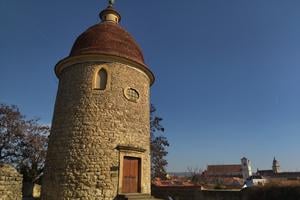
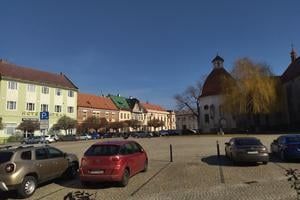
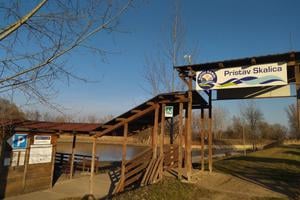
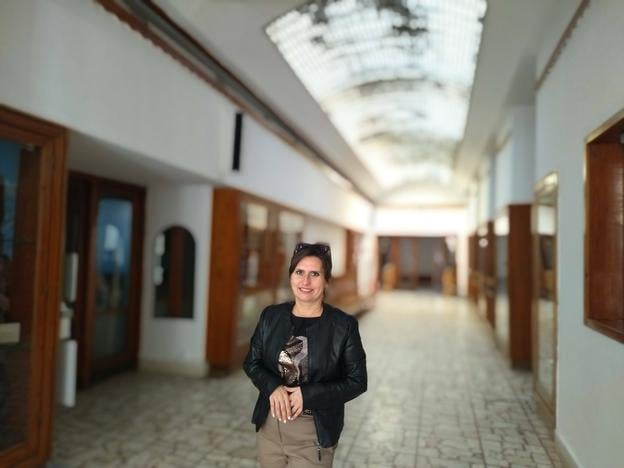 Renáta Medňanská is the dynamic head of the tourist office in Skalica. (source: SME/Jozef Ryník)
Renáta Medňanská is the dynamic head of the tourist office in Skalica. (source: SME/Jozef Ryník)
 The Baťa Canal is in need of modernisation. (source: SME/Jozef Ryník)
The Baťa Canal is in need of modernisation. (source: SME/Jozef Ryník)
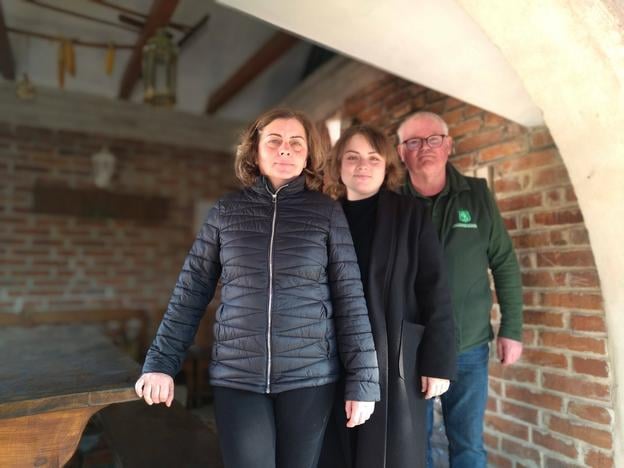 The Kopeček family own a winery in Skalica. (source: SME/Jozef Ryník)
The Kopeček family own a winery in Skalica. (source: SME/Jozef Ryník)
 Peter Tomčík is the co-owner of the craft brewery Špicer in Skalica. (source: SME/Jozef Ryník)
Peter Tomčík is the co-owner of the craft brewery Špicer in Skalica. (source: SME/Jozef Ryník)